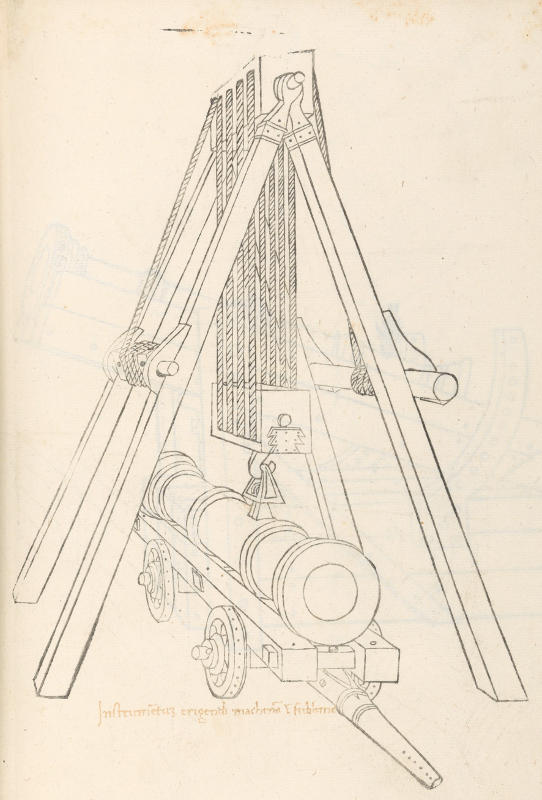
Create an Amazon Business Account
Chèvre or 'goat' in De re militari by Valturio



Object Details
Author: Roberto Valturio (Italian, Rimini 1405–1475 Rimini)
Artist: Matteo de' Pasti (Italian, Verona ca. 1420–after 1467 Rimini)
Publisher: Johannes ex Verona (Italian, active Verona ca. 1472)
Published in: Verona
Date: 1472
Medium: Printed book with 82 woodcut illustrations impressed by hand; illuminated initials and descriptive captions also added by hand
Dimensions: 13 x 9 7/16 x 1 7/8 in. (33 x 24 x 4.8 cm)
Classification: Books
Credit Line: Harris Brisbane Dick Fund, 1926
Accession Number:26.71.4
When this military treatise was completed around 1460, the patron, Sigismondo Pandolfo Malatesta,
distributed a number of manuscript copies to rulers such as Louis XI, Francesco Sforza, and Lorenzo de' Medici.
Twenty-two handwritten copies survive. In 1472, the book appeared in print in this Latin edition, which was followed in 1483 by an Italian version.
The Metropolitan Museum of Art, New York
One manuscript is British Library MS 24945
Title: ROBERTI Valtuii de re militari libri xii.; dedicated to Sigismondo Pandolfo Malatesta, Lord of Rimini, ob. 1467. Vellum; xvth cent. With illuminated initials and numerous coloured designs of military engines, etc.
Collection Area: Western Manuscripts
Reference: Add MS 24945
Creation Date: 15th century
Language: English
An illustrated manuscript written circa 1475-80, of Valturio (Munich, Bayerisch Staatsbibliothek, CLM 23467), "is a direct copy of the printed edition. The illustrations also are clearly copied from the woodcuts."
Source: Jeremy Norman's historyofinformation.com
The 1483 latin edition at the Bayerische Staatsbibliothek
On February 13, 1483 printer Boninus de Boninis, de Ragusia of Verona issued a second edition of Valturio's De re militari in Latin, followed 4 days later by his Opera dell' arte militare, translated into Italian by Paolo Ramusio on February 17, 1483. The Italian translation is the first illustrated book on technology published in a vernacular. (Jeremy Norman's historyofinformation.com)
Referenced as fig. 159 in ARTILLERY in 'Armies of the Middle Ages, Volume 1' by Ian Heath:
159. This is a chèvre or 'goat', a robust timber framework operated by ropes and pulleys that was used to lift guns out of their travelling carriages and into their tillers ready for action. This particular picture is from an Italian ms, of c. 1455 written for the condottiere Sigismondo Malatesta.
Fig. 15 (a) This elaborate engine for lifting a cannon into position appeared as an illustration to Valturio’s De re militari. (Bodleian Library. Oxford, MS. Canon. Class. Lat. 185, f.166v) Valturio’s treatise is not noted for the accuracy with which it depicts contemporary warfare (c.1455), but this illustration does give an impression of the cumbersomeness of early artillery.
Source: Mercenaries and their Masters: Warfare in Renaissance Italy By Michael Mallett
'Engine for lifting a cannon into position'. 1532 edition of 'De re militari' by Valturio, p.270. Smithsonian Library